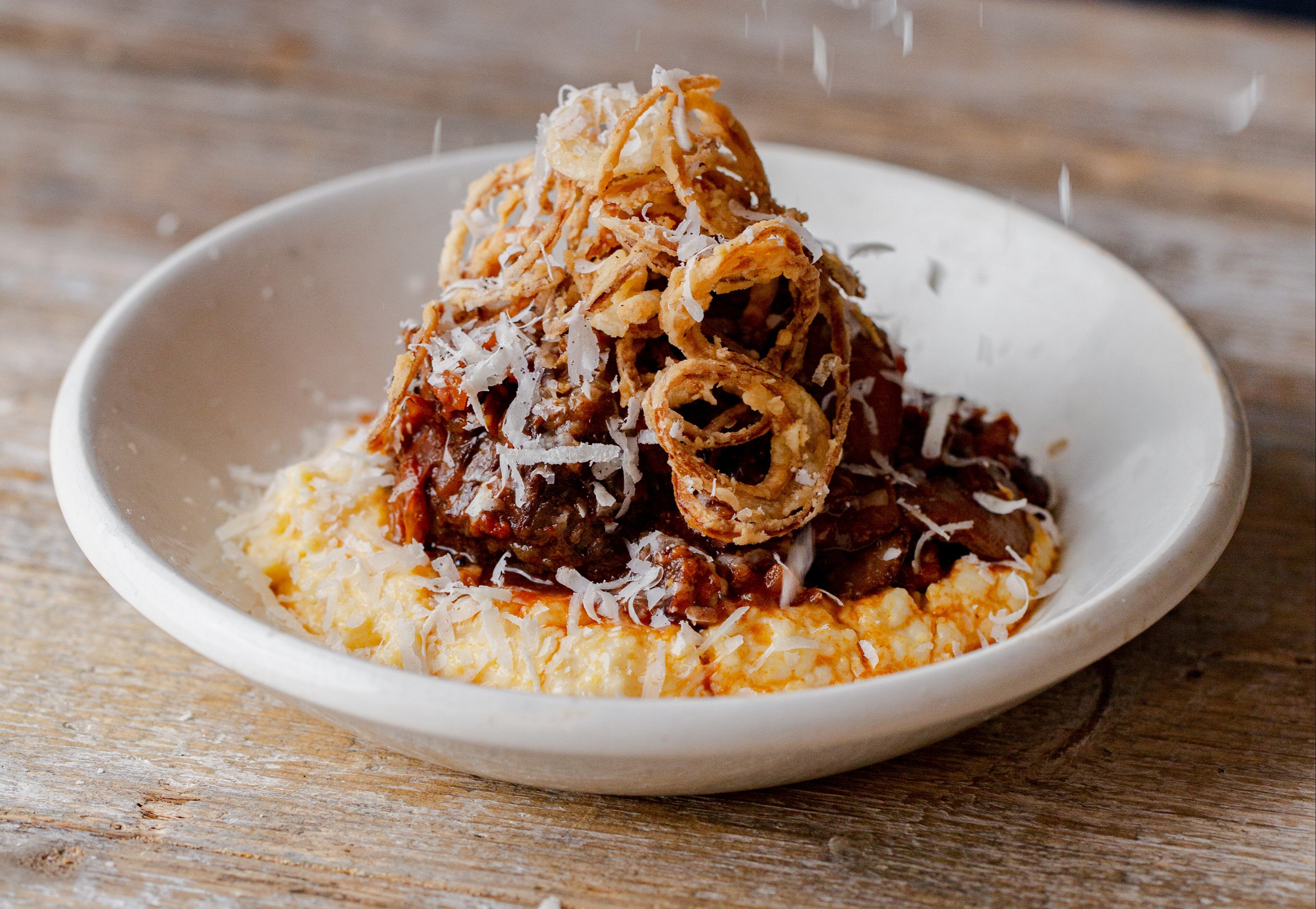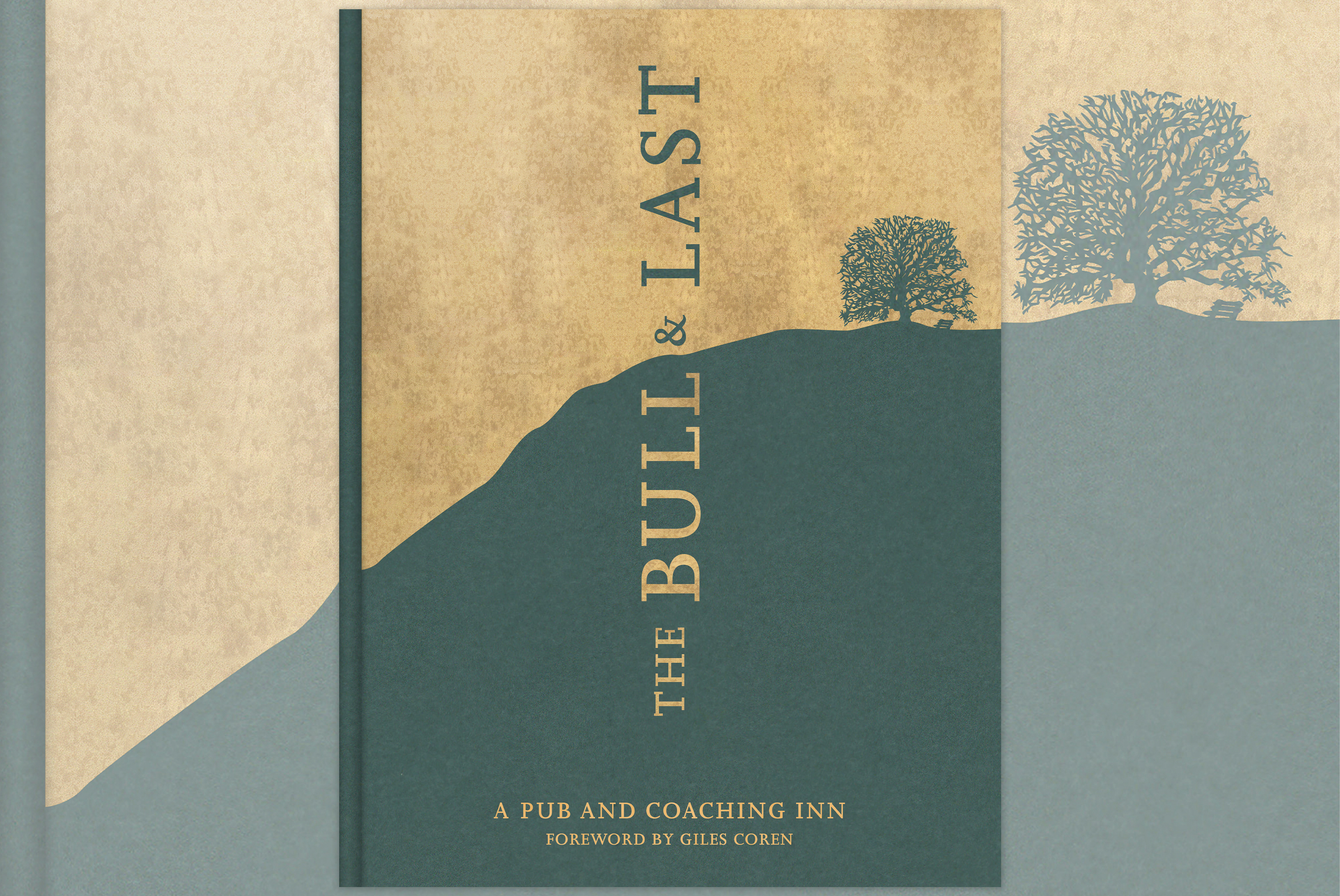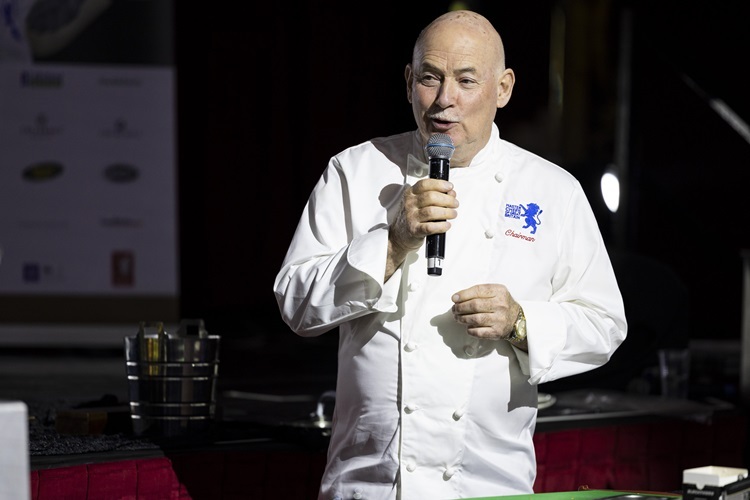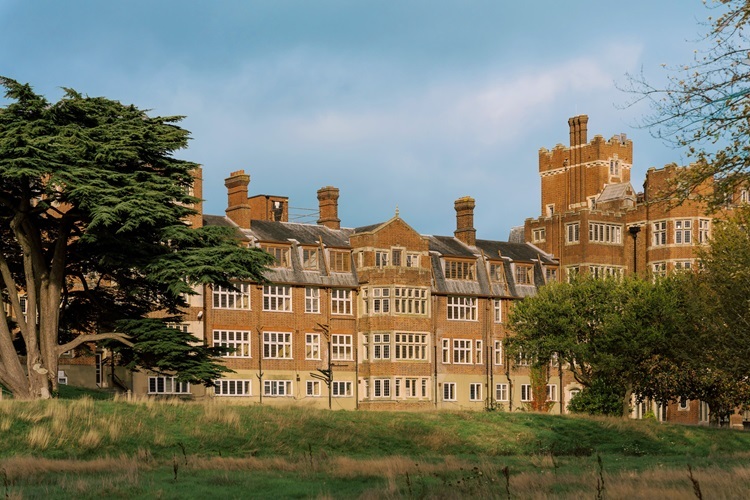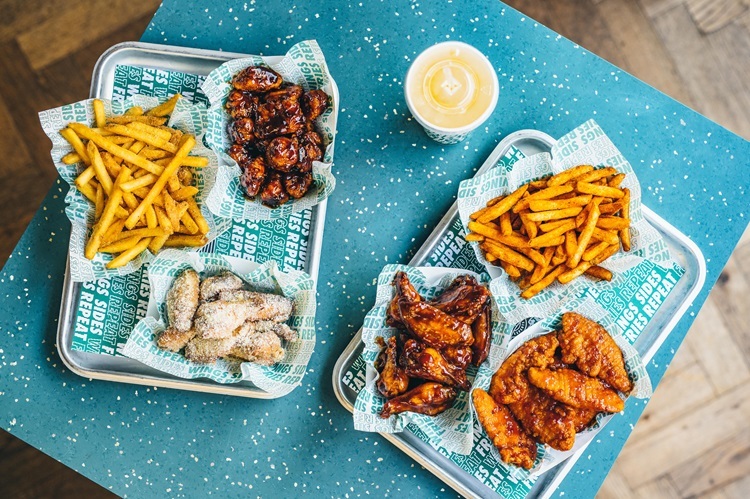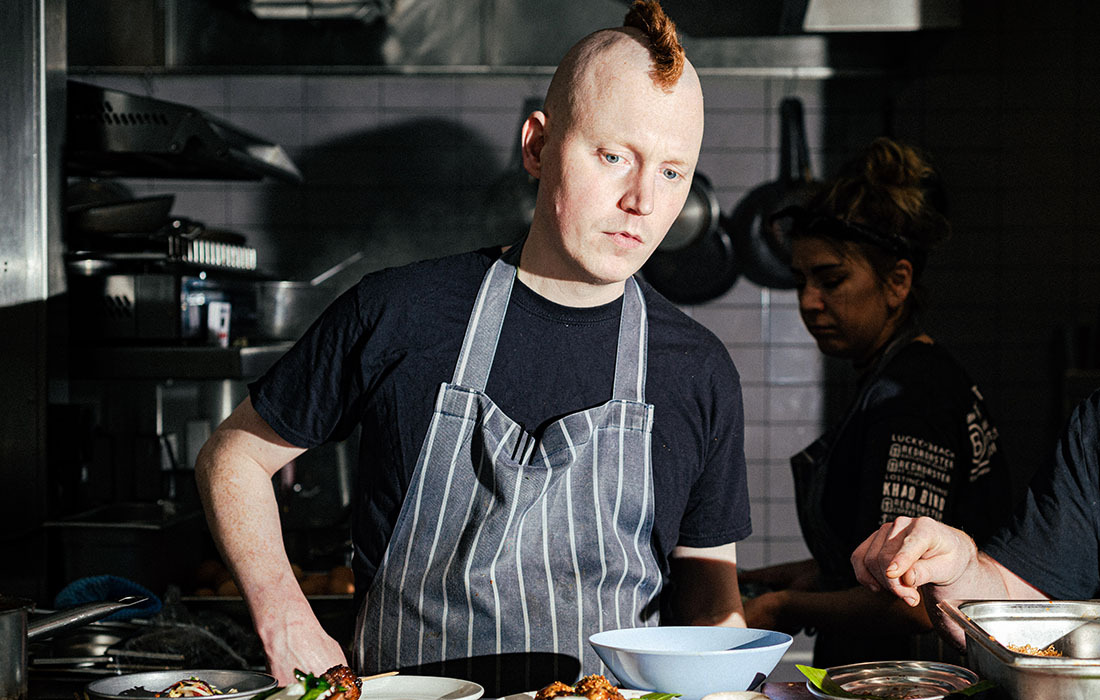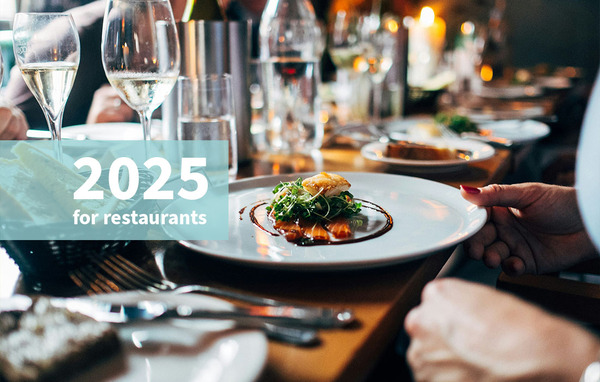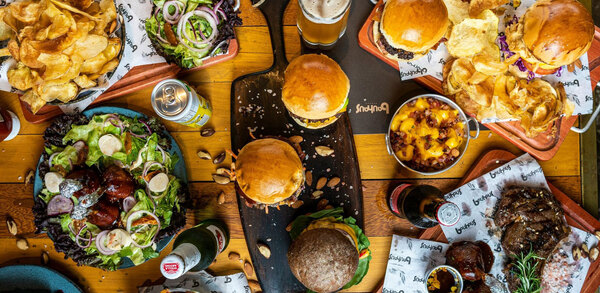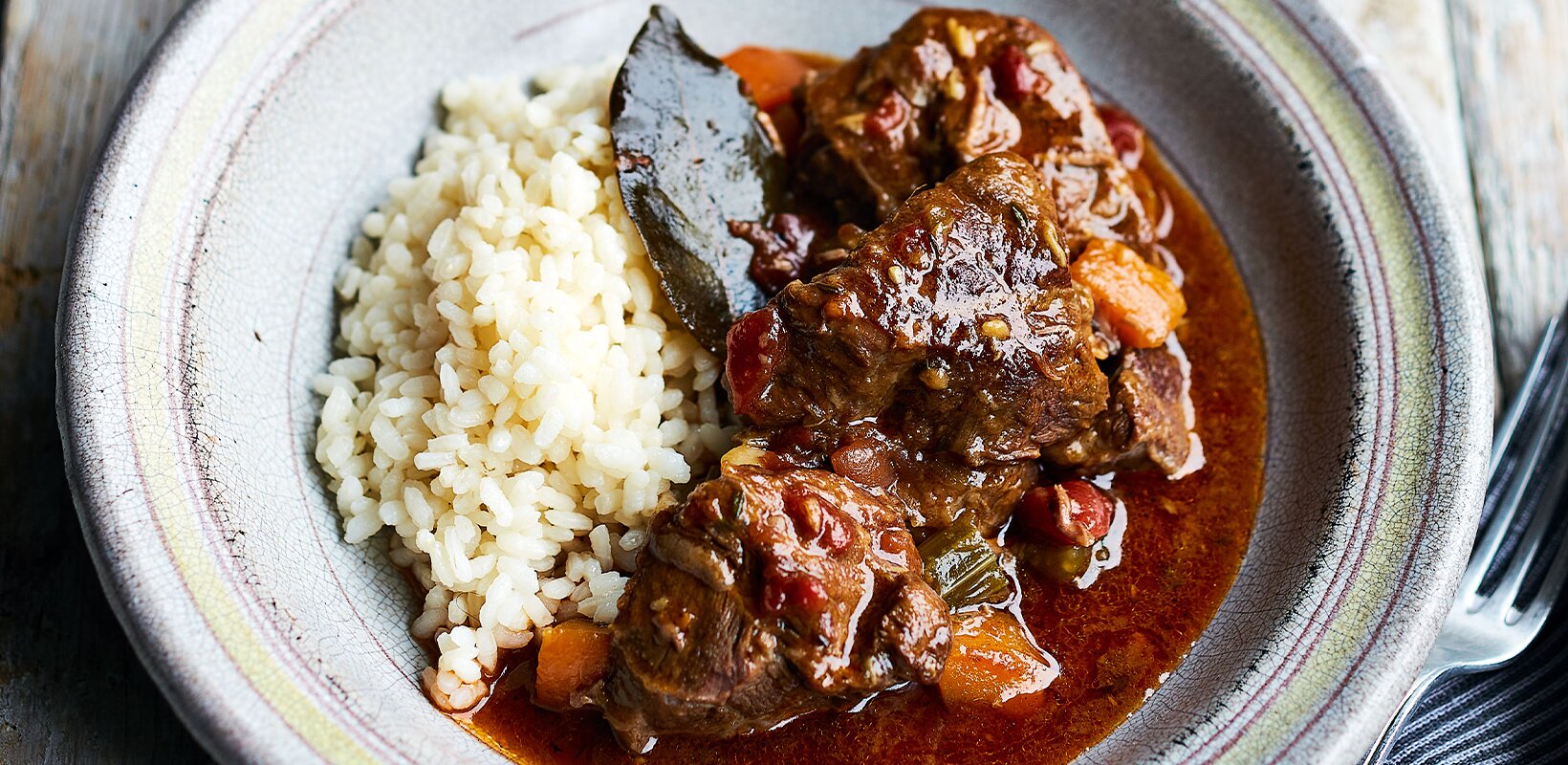Recipe: Slow-cooked beef cheek with soft polenta, crispy shallots and Parmesan, from The Bull & Last
Taken from The Bull & Last, by Ollie Pudney and Joe Swiers (Etive Pubs, £30)
Soft, rich, sticky and creamy, and perfect for when there’s a chill in the air. Cook the beef cheeks in advance – the day before serving, if you like. You can make the crispy shallots ahead of time, too.
Agretti (monk’s beard) or cime di rapa drizzled with olive oil, with lemon wedges for squeezing, make a great side.
- 2 beef cheeks, trimmed of sinew
- A dash of rapeseed oil
- 2 white onions, diced
- 2 carrots, diced
- 3 celery sticks, diced
- 250g chestnut mushrooms, thinly sliced
- 100g smoked bacon lardons
- 3 garlic cloves, thinly sliced
- 1tbs tomato purée
- 400g tin cherry tomatoes
- 1 bouquet garni (a small bunch of bay leaves, thyme and rosemary sprigs, tied together)
- 750ml rich red wine
- 500ml beef stock
- 1.5 litres whole milk
- 250g yellow polenta
- 125ml double cream
- 200g Parmesan, finely grated, plus extra to garnish
- Sea salt and freshly ground black pepper
- 1 × quantity crispy shallots to serve
Preheat the oven to 150°C.
Halve each cheek to make four portions and season with a little salt and pepper. Heat the oil in a heavy-based casserole dish over a medium heat, add the beef cheeks and briefly brown on all sides. Remove the cheeks from the dish and set aside.
Add the vegetables and bacon lardons to the dish and cook for 5-7 minutes until golden brown, then add the garlic, tomato purée, tinned tomatoes and bouquet garni.
Pour in the wine, simmer until reduced by half, then add the beef stock. Return the beef cheeks to the pan, add a good crack of black pepper and bring to a simmer. Cover the dish with a lid and transfer to the oven to cook very gently for 2½-3 hours, until the cheeks are very soft. Remove the dish from the oven and rest the cheeks in the braising liquid (with the lid on).
Now, cook the polenta. Bring the milk to a gentle simmer in a large heavy-based saucepan, then pour in the polenta in a steady stream while stirring with a wooden spoon. Cook over a low heat for 30-40 minutes, stirring frequently, until thick and soft. Remove from the heat then stir in the cream and the grated Parmesan. Season to taste with salt and pepper and set aside.
Serve the beef cheeks and polenta with the braising liquid, scattered with the crispy shallots, and with a chunk of Parmesan on the table for grating.
Crispy shallots
- 4 banana shallots, peeled and sliced into roughly 2mm-thick rings
- 125ml whole milk
- 300ml rapeseed oil
- 1tbs plain flour
- Sea salt
Soak the shallot slices in the milk for 10 minutes (this softens the shallots’ acidity). Meanwhile, heat the rapeseed oil in a heavy-based sauté pan over a medium heat for a couple of minutes until it reaches 180°C.
Remove the shallots from the milk, separate the rings, and dry them with a little kitchen paper. Place in a mixing bowl and add the flour, then toss to ensure all the pieces of shallot get a good dusting.
Test one piece of shallot in the hot oil – it should turn golden after about 20 seconds.
Fry the shallot rings in two batches, removing each batch with a slotted spoon and draining them on kitchen paper. Season with salt. Serve shortly after frying – they should be used on the day they’re made. ###Beef stock
Makes 4-5 litres of stock
- 4kg beef bones (with marrow)
- 4 carrots
- 4 onions
- ½ head of celery
- A drizzle of rapeseed oil
- 1kg beef shin on the bone, cut as osso buco
- 750ml red wine
- 2 bay leaves
- 1 head of garlic
- 1tbs tomato purée
- 1 sprig of thyme
- A pinch of black peppercorns
Preheat the oven to 200°C.
Place the beef bones in an even layer in a roasting tray. Avoid piling the bones on top of each other and use multiple trays if necessary.
Wash and roughly chop the vegetables, place them on another roasting tray and drizzle with rapeseed oil. Roast the bones and vegetables in the oven for about 20 minutes, until golden in colour.
Combine the roasted bones and vegetables in a large stock pan with the rest of the ingredients and add enough cold water to cover. Bring to the boil and skim off any scum that forms on the surface, then reduce the heat and simmer for 6-8 hours, topping the pan up with extra water if necessary and continuing to skim occasionally.
Remove from the heat and strain the stock into a clean pan. Allow to cool fully, then transfer to containers and seal. Store in the fridge for up to three days, or in the freezer for up to one month.
Photography by Joe Howard



